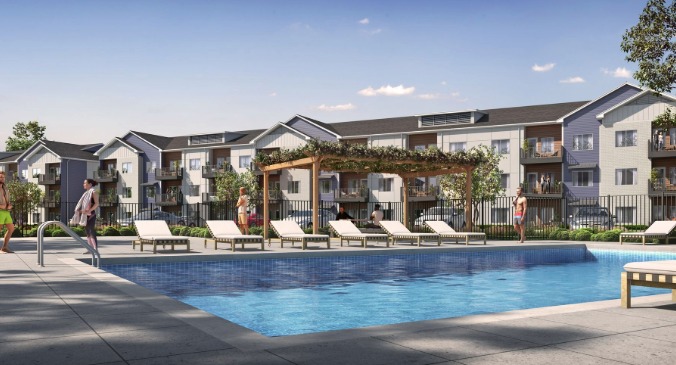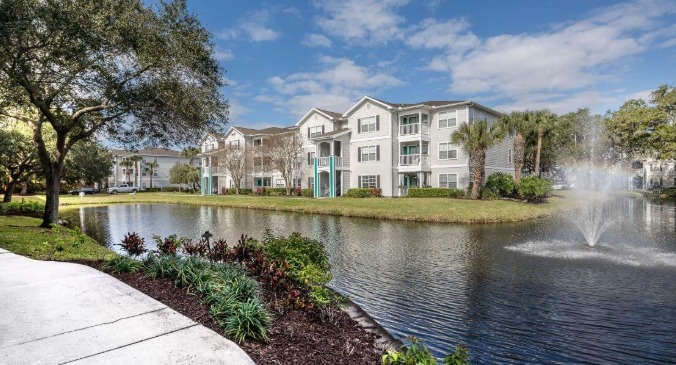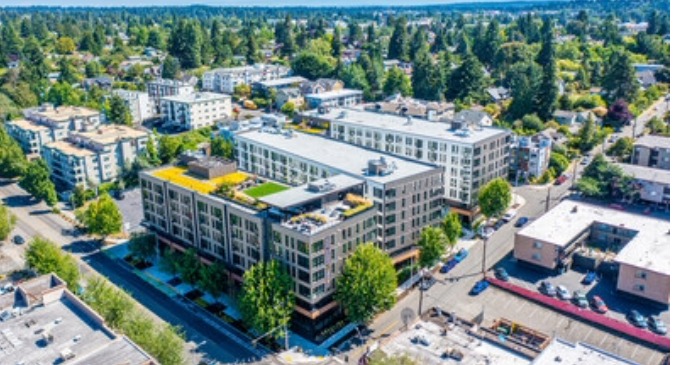Yield PRO TV presents NAHB Power Hitters. Host Linda Hoffman talks with Matt Brendel, Senior Managing Director of Legacy Partners.
Transcript: NAHB Power Hitters interview. Linda Hoffman with Matt Brendel, recorded April 13, 2022
(music)
Linda Hoffman: Apartments are my life. And no one has reminded me of this more than today’s guest. I owe my entire career—every moment, every cycle, high and low, up and down—to the multifamily industry and I can say with the greatest conviction—Lincoln—now Legacy—launched many a career, mine being just one.
The story began in the early 80s when a handful of Texas cowboys made their way west to launch Lincoln Property Company in Foster City, California. Names like Preston Butcher, Dean Henry, Jim Woodson, Denny McClary, Ernie Wong… true pioneers who made a lasting mark on Silicon Valley before there really was a Silicon Valley… and now Legacy stretches across the nation following the vision of those early Texans decades ago.
That rich and remarkable story is far too long for this show… but it comes full circle with today’s guest, Matt Brendel, senior managing director of Texas and Tennessee, for the one, the only, Legacy Partners. Matt, I can’t tell you how delighted I am to have you on the show and what great memories and history you have brought up in recent days with our team.
Matt Brendel: Thanks for the invitation, definitely an honor to be here.
Linda Hoffman: Tell us a little bit about yourself and Legacy Partners.
Matt Brendel: Sure, well my most important vocation in life is as a husband and father, but besides that I am the senior managing director for the Texas regional office, which includes all development activities for Texas and Tennessee. I’ve had the fortune of being in the multifamily industry now for over 20 years. I been with Legacy now for two years and before that I was the divisional president for JPI. I ran a team of professionals and we were able to develop over 30 communities and almost 12,000 apartment homes during that tenure. And as you know Legacy Partners is a privately held real estate firm and we develop, own, and manage multifamily communities throughout the United States.
Today we’re active in the state of Washington, Northern and Southern California, Colorado, Texas and have expanded to Florida now. We’re also looking to expand into Tennessee and Georgia and the Carolinas. You know, over the history Lincoln, now Legacy, has developed over 66,000 apartment homes over its history, so definitely a long and successful history.
Linda Hoffman: Since you joined Legacy Partners, Matt, the company has greatly expanded its presence in Texas. What change in the markets prompted the company’s decision to focus on Texas?
Matt Brendel: Sure, it’s a great question and I’d say when you look at the demand drivers for multifamily, the number one and number two demand drivers are population growth and job growth. Some people might tell you the number 1, 2, 3, 4, 5 is job growth and, frankly, Texas has led in both population growth and job growth. So, over the past 15 years it’s led in population growth and, actually, when you look at the Texas economy versus the rest of the world it ranks ninth in the world economies. So, it’s pretty unbelievable stats. And like everybody says, Texas has a competitive advantage in business advantages such as no property, no income tax, you know, no business taxes and things like that so it’s a very business friendly environment.
I think this is the reason we’re seeing corporations like Toyota and McKesson, CBRE, Amazon, Tesla, HP, Oracle, just to name a few—who have either moved to or expanded their operations in Texas. And frankly I think this is just the beginning of the Texas boom.
Linda Hoffman: Your title at Legacy Partners is senior managing director for Texas and Tennessee. When should we expect to hear news of a project in Tennessee?
Matt Brendel: Sure. Great, great question. We don’t have anything on the map today. But, whenever we at Legacy Partners want to expand into new markets we attempt to be very strategic and data driven, so we take some time to look at the markets. So, for the past 6 to 12 months we’ve been evaluating the market, evaluating sites, meeting people, creating relationships and we’re just at the point where we’re kind of ready to stake our flag today in Nashville. So, we’re starting to look at some opportunities and bidding on some projects, but aren’t prepared just yet to announce anything, but expect to do so very soon.
Linda Hoffman: Nashville, fascinating.
Matt Brendel: Yes.
Linda Hoffman: Looking at Legacy’s recent development, it appears that your sweet spot is a 200 to 400-unit mid-rise market-rate. Then there’s Camber Ranch in Austin at 483 units in 22 two- and three-story buildings. Why the different approach?
Matt Brendel: Well, that’s a great question also, and when you look at Legacy’s capabilities from a development front, we have built everything from high-rise buildings that are over 20 stories to, you know, seven-story podiums to surface park projects where that that might be three-story and even are developing the capability to build single family homes in a build-direct type community. So, when we look at certain opportunities and we want to move forward with those opportunities, again, we’re data driven, so we’re looking at kind of rigorous site planning efforts and market analysis.
This site, specifically, is a 35-acre site, which is much larger than you typically see. And when we went to the site, what struck us was the topography of the site. So, there are a lot of rolling hills, there was a creek running through the middle of the site and it was just a beautiful property. So, when we claim the property, we wanted to embrace the topography, to embrace the natural setting of that site. And, so, what you find is we’re, we’re trying to use less of the site and keep more pervious cover and more trees and really orient everything more towards the creek there.
So that’s why you see the 22 three-story homes. So, we think that amenities, including the natural area, will be a large driver for resident demand including the technology that we provide, and the customer service, as well.
Linda Hoffman: Some of your properties are described as transit-oriented developments. There have been reports, especially from New York City and from the San Francisco Bay area, of ridership on mass transit dropping dramatically since the pandemic. Has that also been the case in Texas, and do you think that the definition of TOD will change to put more emphasis on freeway access and less on proximity to mass transit?
Matt Brendel: Well frankly, we’ve seen the same thing kind of due to the pandemic. Mass transit ridership has been down in Texas, as well, I think that when you look at the statistics it’s about, it’s down about 50 percent due the pandemic. However, I think I’d point out a few things there. One is when you look at the drop in ridership, we think that’s a short-term evolution and that when people start coming back to work we’ll start seeing the ridership come back to pre-pandemic, and maybe over pre-pandemic levels, as the infrastructure continues to be expanded.
The other thing I’d point out is when you look at mass transit and where municipalities plan this mass transit in quote-unquote TOD areas, there’s a lot of different descriptions of those, so it’s usually in the path of growth. It’s typically higher density population. There’s thousands of jobs in the area. Lots of entertainment and dining options. Connectivity to other forms, as you’ve mentioned, of transportation including interstates, you know, freeways, tollways, trail systems and all of these things our residents covet as, you know, part of their living environment. And, so, I think what you see with TOD, and I think you need to look at probably connectivity, quote-unquote, in a broader sense, which includes not just mass transit, it includes all forms of infrastructure and connectivity including roads, trail systems and mass transit.
Linda Hoffman: Are there any headwinds that you see that might limit the ability to grow the pipeline to meet unprecedented demand that we’re seeing today?
Matt Brendel: Definitely. It’d be cliché to say we live in interesting times, but there’s always been unique obstacles that our industry has had to overcome. I think the main obstacles today fall into two buckets. One of those is the supply chain disruptions that you’ve seen over the past couple years and those are real and we’ve had some significant construction cost inflation over that time. Thankfully, and during that same period of time, we’ve had unprecedented growth as well, and so the market has cooperated where, even though we’ve had increased construction costs, we had unprecedented occupancies and increased rental, rent growth, and all the things that go into the equation of development.
However, I don’t, it’s hard to imagine that these trends can continue at the pace that they that they have been, so, I think we, as an industry, need to plan and plan for the future in that regard.
The other bucket, I think these headwinds fall into, is a general regulation bucket. And, you know, by most accounts we are undersupplied in housing, in general, by 4 to 5 million housing units—so that’s both single-family and multifamily combined. And honestly, builders cannot keep up with this demand, so we’ll be undersupplied for some period of time. At the same time, we continue to hear a cry for affordable housing, which I think we can all agree, is very important for our country and in our economy. There was a recent study that was conducted by NAHB and NMHC and that study concluded that almost a third of our development costs in a multifamily project are due to regulations. So, it’s one area that we should look to when we’re thinking about, you know, affordable housing.
How can we work with municipalities and help with some of these regulations? That same study actually also showed that about 85 percent of developers experienced that, there were delays or sometimes even projects died during the entitlement process because of neighborhood objections or NIMBYism. And so that’s also causing the supply not to be there to meet demand and so I think the more we can work with neighborhoods, the more we can help explain how we can achieve affordable housing and the more we can work together with municipalities, in a teamwork effort will help us solve some of these issues.
Linda Hoffman: Those are the true points. Absolutely. What other trends do you see in the markets today that can be incorporated into a solid business plan going forward?
Matt Brendel: Sure. We’re always looking at trends and evolving trends. One of things which I mentioned earlier that we now have the capability to develop is the single-family, you know, build-to-rent communities. We’re hearing a lot about those. It’s still a small segment of housing at large, but it’s actually being accepted and there’s a strong demand for this product type. So, we should actually to be starting on our first build-to-rent community, a single-family community, by the end of 2022 and hope that it’s part of our business plan in a larger part going forward.
The other thing that were looking at is, you know, the number one amenity that residents are looking for today isn’t the large pool and the fitness center like it was in the past, although those are still important. The number one amenity that residents are looking for is technology and being connected and smart home technology and things like that. So we have made a concerted effort to provide managed Wi-Fi to 100 percent of our homes and 100 percent of our communities so that you can be connected at all times and so that will facilitate our smart home technology.
So I think that’s vitally important going forward especially as more and more people think that work-from-home options are going to continue into the future. So as you work from home you have connectivity and you need to have that bolstered WiFi connectivity. So, we expect to do that. And in addition, we’re looking at designing our spaces in a smarter way where we can provide work from home-from-home options and work-from-home locations, as well as providing co-working areas from a communal aspect, as well.
You know, the one thing that our industry experiences on a consistent basis is change and, but I think, yeah, all the data points to is that the future is bright for our industry and so I think, you know, we at Legacy Partners and all of our other brethren just need to keep our, yeah, on the trends, and the evolution of the trends, so that we can provide the highest level of living experience.
Linda Hoffman: Matt, I’m curious, your single-family for rent, where is that?
Matt Brendel: There are two projects that we’re looking at right now in the Dallas-Fort Worth area and so they’re kind of in the northern suburbs of Dallas-Fort Worth where, I think what we’re seeing is, is the resident who wants to have all the amenities that a typical multifamily community provides, but maybe have a little bit more space, and four walls and a little bit of a backyard for their pets. You know we’re seeing a lot of our residents—you know almost 50 percent of our residents have pets and so this is a product type that they’re really seeking out.
Linda Hoffman: Wow. That is brilliant. Legacy is at the tip of the spear, as always.
Matt Brendel: Yes. I’m blessed to be part of this organization and definitely excited about the future.
Linda Hoffman: Matt, best show ever. Keep the torch burning and the cranes on the horizon.
Matt Brendel: Yes. Some people say that the crane is the state bird of Texas, so we will try to continue to keep the torch burning and I look forward to a bright future.
Linda Hoffman: Brilliant. It’s a wonderful life… in multifamily. Oh, the people that you’ll meet and the places that you’ll build. Turning dirt into housing and stabilizing the lives of a nation. We follow generations of great developers who acted on a vision and who moved fearlessly through all cycles, economies and political environments. Through all of time, and in this moment.
Thank you for being with us today. Builders, developers, operators. You are what makes this nation great. Housing remains the backbone of our nation and will continue to shape its potential for success and greatness.
I’m Linda Hoffman. Look for our next exciting episode of NAHB Power Hitters.
(music)
NAHB Power Hitters in association with NAHB, National Association of Home Builders, Building Homes, Enriching Communities, Changing Lives.
Yield Pro TV, an Image production.
Host Linda Hoffman
Executive Producer Andrew Nicks
Research Michael Rudy
Guest Selection and coordination Den Schwanke
Production Image
Yield Pro TV is a production of Multihousing Professional magazine corporation and may not be reproduced or copied in whole or in part without the expressed permission of the publisher.
© 2022 YIELD PRO LLC












